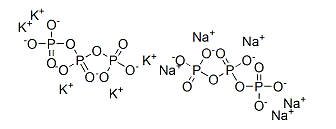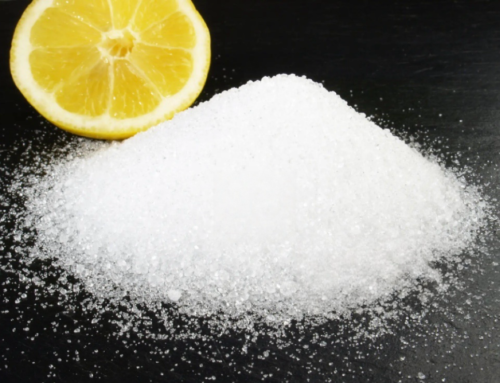Sodium potassium tripolyphosphate (Na3K2P3O10) is a chemical compound that can be used for experimental or research purposes. It is also known as trisodium dipotassium tripolyphosphate or sodium potassium polyphosphate. It has a molecular weight of 448.17 g/mol and a melting point of 620 °C.
Sodium potassium tripolyphosphate is a type of polyphosphate, which is a polymer of orthophosphate (PO4) units linked by phosphoanhydride bonds. Polyphosphates have various applications in different industries, such as water treatment, detergents, food additives, ceramics, and metal finishing.
Sodium potassium tripolyphosphate can act as a sequestrant, a chelating agent, or a water softener. A sequestrant is a substance that binds to metal ions and prevents them from reacting with other substances. A chelating agent is a substance that forms stable complexes with metal ions and enhances their solubility. A water softener is a substance that reduces the hardness of water by removing calcium and magnesium ions.
 Sodium potassium tripolyphosphate can also act as a buffer, a pH regulator, or a corrosion inhibitor. A buffer is a substance that maintains a constant pH in a solution by neutralizing acids or bases. A pH regulator is a substance that adjusts the pH of a solution to a desired level. A corrosion inhibitor is a substance that protects metal surfaces from oxidation or deterioration.
Sodium potassium tripolyphosphate can also act as a buffer, a pH regulator, or a corrosion inhibitor. A buffer is a substance that maintains a constant pH in a solution by neutralizing acids or bases. A pH regulator is a substance that adjusts the pH of a solution to a desired level. A corrosion inhibitor is a substance that protects metal surfaces from oxidation or deterioration.
Sodium potassium tripolyphosphate can be synthesized by heating sodium tripolyphosphate (Na5P3O10) and potassium carbonate (K2CO3) in a molar ratio of 1:1 at 600 °C for 2 hours. The product can be purified by washing with water and drying at 110 °C.
Specific usage:
·In the food industry, it can be used as a food additive to preserve foods such as red meats, poultry, seafood, and pet food. It helps them to retain their tenderness and moisture during storage and transport. It can also act as a pH regulator, a sequestrant, or a buffer in some foods.
·In the water treatment industry, it can be used as a water softener, a corrosion inhibitor, or a scale inhibitor. It can prevent the formation of calcium carbonate or magnesium carbonate deposits in pipes and boilers.
·In the detergent industry, it can be used as a builder, a dispersant, or a sequestrant. It can enhance the cleaning performance of detergents by increasing their solubility, preventing soil redeposition, and chelating metal ions.
·In the ceramic industry, it can be used as a deflocculant, a dispersant, or a binder. It can improve the rheological properties of ceramic slurries, prevent the agglomeration of ceramic particles, and increase the green strength of ceramic products.
·In the metal finishing industry, it can be used as a plating agent, a corrosion inhibitor, or a cleaner. It can improve the quality of metal coatings, protect metal surfaces from oxidation or deterioration, and remove dirt or grease from metal parts.
Sodium potassium tripolyphosphate is not toxic, but it may cause irritation to the eyes, skin, and respiratory tract if inhaled, ingested, or contacted. It may also cause gastrointestinal disturbances, such as nausea, vomiting, or diarrhea. It should be handled with care and stored in a cool, dry place away from heat and moisture.





